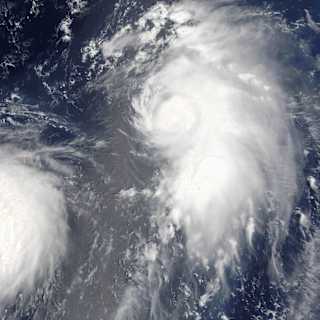- Acceleration Beyond Projections
- Immediate Impacts and Health Risks
A record-breaking heat dome engulfed the eastern United States this week, with 128 million Americans under heat advisories as temperatures soared to levels not seen in over a decade. The heat wave, which peaked Tuesday with Central Park hitting 99 degrees and Boston reaching 101 degrees, comes as new scientific evidence shows global warming has accelerated beyond previous projections.
The current heat wave represents the first major extreme weather event of 2025, occurring as international climate scientists warn that greenhouse gas accumulation is accelerating faster than anticipated. Climate Central analysis found that human-caused climate change made this extreme heat at least three times more likely for around 174 million people—nearly half the U.S. population.

New research led by former NASA climate scientist James Hansen documents a surge in global warming during the past 15 years, with the rate increasing by more than 50 percent over the previous four decades1. The study found that global temperatures have risen more than 0.7 degrees Fahrenheit in just the past two years1.
"Things aren't just getting worse. They're getting worse faster," said study co-author Zeke Hausfather of Berkeley Earth2. An international team of 60 scientists now predicts society will emit enough greenhouse gases by early 2028 to create a 50-50 chance that Earth will be locked into 1.5 degrees Celsius of long-term warming since preindustrial times2.
The current heat wave follows a pattern of increasing frequency and intensity. Heat waves now occur three times as often as they did in the 1960s, with one 2022 study finding that climate change is making heat domes 150 times more likely3.
The heat dome—a high-pressure system trapping hot air—forced construction workers in Boston to leave jobs early and hospitalized two firefighters in Norfolk, Massachusetts, for heat exhaustion1. Power grids strained under demand, with more than 34,000 homes losing power in the Bronx2.
"This heat wave is simply astounding," said Robert Rohde of Berkeley Earth, noting that based on 20th-century norms, such a heat wave would be expected no more than once in 1,000 years3. The National Weather Service warned of "extremely dangerous" conditions affecting nearly half the U.S. population2.
The World Meteorological Organization predicts a 70 percent chance that the 2025-2029 period will exceed 1.5 degrees Celsius above preindustrial levels4. As relief moves in Thursday for the Northeast, the broader pattern signals what scientists describe as Earth's entry into uncharted climate territory.





